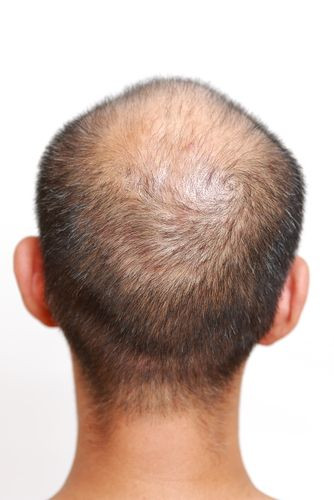Gravitation Theory Explains Baldness: 'Vicious Cycle' Of Testosterone Surplus And Gravitational Pressure Leads To A Shiny Head

Male pattern baldness, also known as androgenetic alopecia (AGA), accounts for more than 95 percent of hair loss in men, and affects an estimated 35 million of them in the U.S., according to the National Institutes of Health. But what exactly causes this kind of balding? According to a new report, the answer lies in something we’re all susceptible to: gravity.
Dr. Emin Tuncay Ustuner, a plastic surgeon in Ankara, Turkey, came up with the theory that calls out gravity’s “force of downward pull ... on the scalp” as the main culprit in male pattern baldness. But there’s a little more to it, and it involves a potent form of the male sex hormone testosterone, known as dihydrotestosterone (DHT), which has been known to thin hair follicles in the scalp.
Dr. Ustuner’s theory posits that aging, and to a lesser extent testosterone, causes people to lose the fatty tissue that lies under their scalp. This tissue is able to keep itself “well hydrated” during youth, thereby protecting the hair follicles from gravitational pressure. But as it’s lost, pressure increases on the follicles, and the body tries to compensate for the added pressure by sending more testosterone to help grow hair. This leads to an overabundance of DHT, and what was once just a contributing factor to lost fatty tissue becomes a major factor, according to a press release.
These processes become a “vicious cycle” in which DHT tries to grow hair, but causes the fatty tissue to dissolve, subsequently leading to more gravitational pressure, Dr. Ustuner said. For this reason, many people lose hair on the top of their heads first, and then at the front of the head, where weight from facial tissue pulls down further, he said. Hair remains on the side of the head because the ears are there to provide support.
“There is not another theory that reasonably and satisfactorily explains hair loss in AGA without ascribing a function to DHT that is opposite to its known function,” he wrote, according to the statement. While certain theories say that genetically predisposed people are susceptible to these hormonal patterns, Dr. Ustuner said that increases of DHT in the scalp are “not an occurrence directly determined by genes.”
Earlier this year, a survey of 2,000 U.K. men found that 94 percent of them feared balding over any other aspect of aging. Luckily for them, a new hair-regeneration procedure from Columbia University could help cure the bald spot, but it involves a little circumcised foreskin.
Source: Ustuner E. Cause of Androgenic Alopecia: Crux of the Matter. Plastic and Reconstructive Surgery — Global Open. 2013.
Published by Medicaldaily.com



























